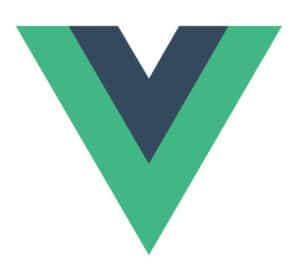
Vue.js Training
This Course Covers Version(s): Vue.js 3.0
- Live Class with Instructor
- Digital Course Manual
- Hands-on Labs
- Up to 1 Year Access to Recorded Course
In this Vue.js Training Course, students will learn how to get started with Vue.js – an open source JavaScript library for building modern, interactive web applications. Its component-based approach, intuitive API, blazingly fast core, and compact size make Vue.js a great solution to craft front-end applications. This course provides students with practical solutions to common problems when building an application using Vue. Students will start by exploring the fundamentals of Vue.js: its reactivity system, data-binding syntax, and component-based architecture through practical, hands-on examples. Students will also delve into integrating Webpack to enhance the development workflow using single file components. Finally, students will learn about Vuex for state management and Vue Router to route in single-page applications.
Upon successful completion of this course, students will be able to:
- Creating dynamic and animated lists
- Identifying how to use computed properties
- Animating with JavaScript instead of CSS
- Packaging reusable transitions into components
- Creating basic AJAX requests with Axios
- Utilizing Jasmine for testing Vue and Karma workflow
- Utilizing single-page applications and Webpack
Students should have familiarity with the basics of the JavaScript language.
This Vue.js course is for web developers who have little or no prior experience with Vue.js. It mainly targets JavaScript users who want to learn a modern and simple JavaScript framework.
- Getting Started With Vue.Js
- A Simple Vue.js Program
- Lists and their Types
- Creating a Dynamic and Animated List
- Reacting to Events Such as Clicks and Keystrokes
- Choosing a Development Environment
- Formatting Your Text with Filters
- Basic Vue.Js Features
- Learning How to Use Computed Properties
- Filtering a List with a Computed Property
- Sorting a List with a Computed Property
- Formatting Currencies with Filters
- Formatting Dates with Filters
- Displaying and Hiding an Element Conditionally
- Adding Styles Conditionally
- Adding Some Fun to Your App with CSS Transitions
- Outputting Raw HTML
- Creating a Form with Checkboxes
- Creating a Form with Radio Buttons
- Creating a Form with a Select Element
- Transitions And Animations
- Integrating with Third-Party CSS Animation Libraries
- Adding Your Own Transition Classes
- Animating with JavaScript Instead of CSS
- Transitioning on the Initial Render
- Transitioning Between Elements
- Letting an Element Leave Before the Enter Phase in a Transition
- Adding Entering and Leaving Transitions for Elements of a List
- Transitioning Elements That Move in a List
- Animating the State of Your Components
- Dynamic Transitions
- All About Components
- Creating and Registering a Component
- Passing Data to Your Components with Props
- Making Components Talk to Each Other
- Making Components Talk with Vuex
- Reading a Child’s State
- Using Components in Your Own Components
- Content Distribution with Slots
- Single File Components with Webpack
- Loading Your Components Asynchronously
- Having Recursive Components
- Vue Communicates With The Internet
- Sending Basic AJAX Requests with Axios
- Validating User Data before Sending It
- Recovering from an Error during a Request
- Creating a REST Client (and Server!)
- Implementing Infinite Scrolling
- Processing a Request before Sending It Out
- Preventing XSRF Attacks on Your App
- Single-Page Applications
- Creating an SPA with Vue-Router
- Fetching Data before Switching Route
- Managing Errors for Your Routes
- Adding a Progress Bar to Load Pages
- Using Named Dynamic Routes
- Having More Than One Router-View in Your Page
- Composing Your Routes Hierarchically
- Adding Transitions between Your Routes
- How to Redirect to Another Route
- Saving Scrolling Position When Hitting Back
- Unit Testing And End-To-End Testing
- Using Jasmine for Testing Vue
- Adding Karma to Your Workflow
- Testing Your Application State and Methods
- Testing DOM Asynchronous Updates
- End-to-end testing with TestCafe
- Stubbing External API Calls with Sinon.JS
- Measuring the Coverage of Your Code
- Organize + Automate + Deploy = Webpack
- Extracting Logic from Your Components to Keep the Code Tidy
- Organizing Your Dependencies with Webpack
- Using External Components in Your Webpack Project
- Developing with Continuous Feedback with Hot Reloading
- Running a Code Linter While Developing
- Releasing Your Components to the Public
This course does not align to a specific exam or certification.
- For Private Groups as small as 2 people.
- Live, Instructor-led Online or Onsite Class for your group.
- Customizable to your needs.